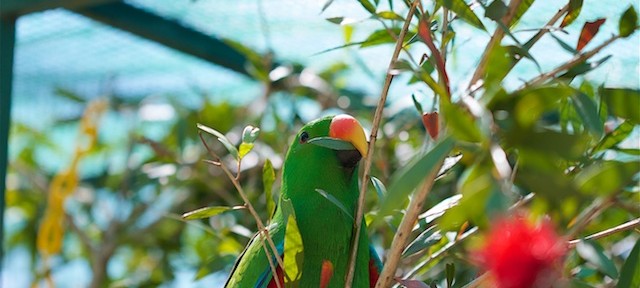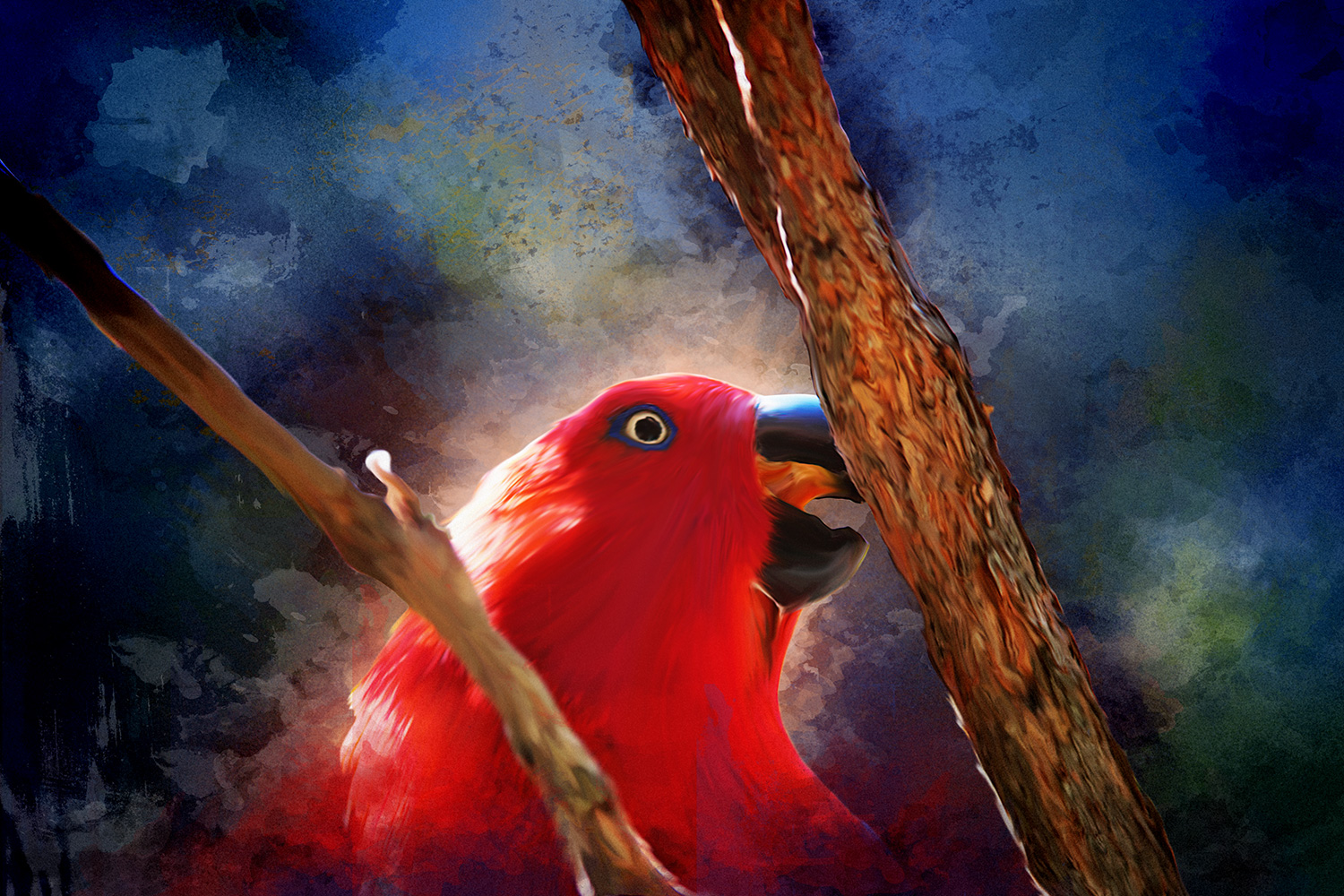As an Eclectus specialist, I spend a great deal of time working with my many Eclectus parrots. From researching dietary changes, developmental phases, bonding, molting, illness, incubation and hand rearing, reproduction and incubation to working closely with my many clients. It is a constant learning curve and one I happily continue from day to day.
Over the years I have received emails from people who read incorrect information and followed this advice believing the person or website/forum or blog they learned from was written by an avian expert. They believed they were reading material written by someone with many years experience working with and researching Eclectus parrots based on their own experience with multiple parrots of this species.
 I know for a fact there are many knowledgable pet owners in our avian community, those who research other peoples work or from their own experience as a parrot slave and like to share this with the online community. I have very close friends who have helped countless people from around the world with their many Eckie related issues however they are the first to say that they are not an expert. The knowledge they have acquired is based from their experience with their own few pet Eclectus and the countless hours of research of others work that they have undertaken both in books and online. Unfortunately not all information is interpreted correctly and when someone is writing based on another persons hard earned research, things can be mis-interpreted and this can lead to incorrect information being perpetuated. On the other side there are many websites on the net written by passionate avian lovers who share good quality information and that is fantastic as without them I would have been lost in my early days.
I know for a fact there are many knowledgable pet owners in our avian community, those who research other peoples work or from their own experience as a parrot slave and like to share this with the online community. I have very close friends who have helped countless people from around the world with their many Eckie related issues however they are the first to say that they are not an expert. The knowledge they have acquired is based from their experience with their own few pet Eclectus and the countless hours of research of others work that they have undertaken both in books and online. Unfortunately not all information is interpreted correctly and when someone is writing based on another persons hard earned research, things can be mis-interpreted and this can lead to incorrect information being perpetuated. On the other side there are many websites on the net written by passionate avian lovers who share good quality information and that is fantastic as without them I would have been lost in my early days.
So how do we know when someone is undertaking extensive research based on their own findings or simply sharing what they have learned from others? As I say to any Eckie enthusiast when asked the validity of information, you need to question the experience behind the author. If you have doubts or wonder how they came to learn this, just ask.

Prior to writing my book I took time to reflect on my own avian experience and asked myself the most important question. Why should people listen to my advice? At the time of writing I had 13 years experience under my belt, not just researching the internet but working with my then 26 Eclectus parrots and the many babies I hand raised. I worried that people may see me as just another Eckie lover with a few gorgeous kids wanting to share what I had read. However when I looked back on my experience and the years I spent working closely with my many feathered kids and their offspring, I knew I had a firm grasp on this species and was confident in my findings. Self doubt can be destructive but can also give you the reality check you need to pursue your dreams.

I reassured myself that I had spent over a decade observing my Eclectus and documenting my findings, taking notes on their dietary changes, reproductive patterns, incubation techniques, hand raising process, molting, well the list goes on but in short my work was extensive. I learned that despite a common trend between my parrots, every single Eclectus was different. Each had different dietary needs during varying times of the year. Our Eclectus required different stimulus for mating, had their own cravings during incubation and then while raising their chicks. The males even tended to the hens differently. Some doted upon their girls, others were a little less chivalrous and would only do the bare minimum, yes Cletus, I am talking about you. Our Eckies personalties differed greatly, so too did the personality of the babies they produced. Their offspring had their own distinct likes and dislikes and when helping a client settle their new baby into their home, I could draw from my years of experience not only with bonding in general but also based on what worked in the past for this specific pairs baby.
Understanding that what works for one Eckie may not work for another intrigued me and made me reflect on the research I had undertaken in my very early years of aviculture when I relied on text books and the internet for help. I didn’t want to regurgitate other persons findings understanding that there is only so much you can learn in this manner. I felt that if I were to write a book and claim this research as my own then it must be done by observing, documenting and learning from multiple members of the same species over a span of many years.
I first began researching Eclectus parrots at the age of 23, by 24 I was a slave to ten Eckies, my life had changed forever. It wasn’t long before I realized the information I had learned in books and on the internet only scraped the surface of what I believed I knew. My parrots had so much to teach me and I was a willing student.
I began sharing my information slowly, waiting until I felt I had enough hands on experience with my then 25 Eclectus to share my findings and observations. I became close friends with a few highly experienced Aviculturists and we would chat for hours, talking about our findings and challenging each other with our different views and opinions. Back then I was still very new to aviculture, only 7 years into my avian career so I was like a sponge, absorbing any information I could from those who had based their life around our feathered friends. From there I chose to develop a website where I melded my two passions, aviculture and writing. I continued to research, observe my own Eclectus and learn from the best.
 My website was met with people thirsting for avian knowledge, information they sought but were unable to find. The very first email I received from my website was from California where I met the man I was eventually to marry. Together we were able to determine his Eckie hen, Phoenix’s car phobia and eventually cure her of this fear. We began working together closely and as a graphic designer, Jason overhauled my first, very basic site and this developed into a blog and eventually a successful forum.
My website was met with people thirsting for avian knowledge, information they sought but were unable to find. The very first email I received from my website was from California where I met the man I was eventually to marry. Together we were able to determine his Eckie hen, Phoenix’s car phobia and eventually cure her of this fear. We began working together closely and as a graphic designer, Jason overhauled my first, very basic site and this developed into a blog and eventually a successful forum.
As 2013 rolled around and I felt I had acquired enough knowledge and experience to write my own book. Despite my hesitation, self doubt and obsessing over every shred of information we finally published our findings and our book has been met with great success. I feel confident in knowing that the information contained in this book and in the articles I write for avian magazines are gleaned from my own extensive experience, both with my own Eclectus and the help that I have given to countless people around the world including their feedback. I even receive emails from a man in Iceland! Who knew they had Eckies in such an inhospitable environment!
 I believe it pays to ask an important question before you take someones work or website to heart, including my own. Ask, ‘what is your experience with Eclectus? How extensively have you worked with them and what hands on research have you undertaken?’ The last thing we want is for people to receive incorrect information and for our feathered friends to suffer because in the long run, it is all about our Eckies well being. They are our main focus, everything we do, all the years of time and research I have undertaken has been for one sole purpose. To better the lives of our Eclectus and to help others care for their precious kids.
I believe it pays to ask an important question before you take someones work or website to heart, including my own. Ask, ‘what is your experience with Eclectus? How extensively have you worked with them and what hands on research have you undertaken?’ The last thing we want is for people to receive incorrect information and for our feathered friends to suffer because in the long run, it is all about our Eckies well being. They are our main focus, everything we do, all the years of time and research I have undertaken has been for one sole purpose. To better the lives of our Eclectus and to help others care for their precious kids.



 I have seen my own work on other avian websites over the years, written word for word. On one such occasion I contacted the person and requested they remove the plagiarized content. I checked back later only to find my work re-worded however the author had made so many errors while changing my copy that the advice they were giving was harmful and potentially deadly. It made me shudder to think of people following such advice, especially at the detriment to their parrot.
I have seen my own work on other avian websites over the years, written word for word. On one such occasion I contacted the person and requested they remove the plagiarized content. I checked back later only to find my work re-worded however the author had made so many errors while changing my copy that the advice they were giving was harmful and potentially deadly. It made me shudder to think of people following such advice, especially at the detriment to their parrot.












